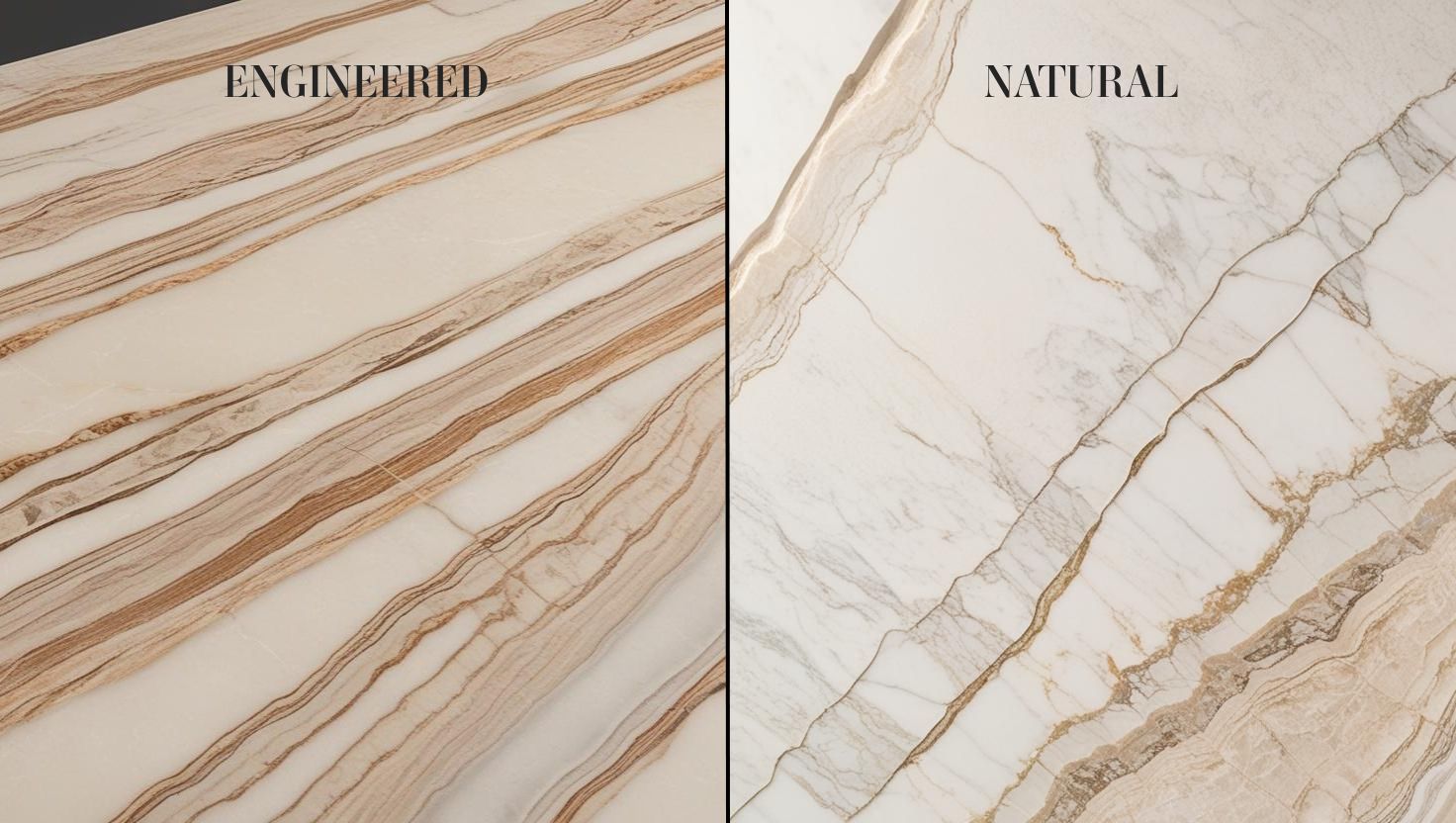Marble has long been a symbol of luxury, elegance, and timeless beauty in architecture and interior design. Whether used for flooring, countertops, or decorative elements, marble adds a touch of sophistication to any space. However, when choosing marble for your home or commercial project, you may come across two main types natural marble and engineered marble.
Both options have their unique advantages and drawbacks, making it essential to understand their differences before making a decision. In this guide, we will compare engineered marble vs. natural marble, outlining their pros and cons to help you determine which is the better choice for your needs.
What is Natural Marble?
Natural marble is a metamorphic rock formed over millions of years under intense heat and pressure. Quarried from mountains and cut into slabs, natural marble is prized for its unique veining, rich textures, and organic patterns. It has been used in architecture for centuries, from the Taj Mahal to Michelangelo’s sculptures, showcasing its durability and aesthetic appeal.
Pros of Natural Marble
- Timeless Beauty and Unique Patterns- Each piece of natural marble is one of a kind, featuring distinctive veining and variations that add depth and character to any space. No two slabs are identical, making natural marble an artistic and luxurious choice.
- Highly Durable and Long Lasting- With proper care and maintenance, natural marble can last decades or even centuries. It is a strong and durable material, making it ideal for flooring, countertops, and statement walls.
- Heat-Resistant and Cool to Touch- Marble stays cool naturally, making it an excellent choice for hot climates. It also has good heat resistance, which is why it’s commonly used for fireplace surrounds and kitchen countertops.
- Increases Property Value- Homes and commercial spaces with natural marble tend to have higher resale value, as marble is associated with luxury and elegance.
Cons of Natural Marble
- Porous and Prone to Stains- Natural marble is highly porous, meaning it can absorb liquids like wine, coffee, and oils, leading to stains. It requires sealing every 6-12 months to maintain its look and prevent damage.
- Susceptible to Scratches and Etching- Marble is relatively soft compared to other stones, making it prone to scratches and etching from acidic substances like vinegar, citrus, and harsh cleaners.
- High Maintenance- Regular sealing, proper cleaning, and careful use are essential to maintain natural marble. It is not as low-maintenance as some engineered alternatives.
Expensive and Heavy- Natural marble is expensive to quarry, transport, and install. Its heavy weight also requires strong subfloor support and professional installation.
Which One Should You Choose?
1. Aesthetic Appeal and Timeless Beauty
The choice between engineered marble and natural marble depends on your specific needs, budget, and maintenance preferences.
Choose Natural Marble if
- You want a luxurious appearance with unique veining
- You are willing to invest in the best materials and regular maintenance
- You prefer a natural, timeless stone with historical significance
Choose Engineered Marble if
- You want an affordable, low-maintenance alternative to natural marble
- You need a stain-resistant and durable option for high-traffic areas
- You prefer a uniform appearance with less upkeep
Conclusion
Both natural marble and engineered marble have their advantages and disadvantages. If you want a classic, luxurious, and organic material, natural marble is the best option. However, if you prefer durability, affordability, and low maintenance, engineered marble is a practical alternative.
Would you like assistance in selecting the perfect marble for your next project? Contact Classic Marble today!


